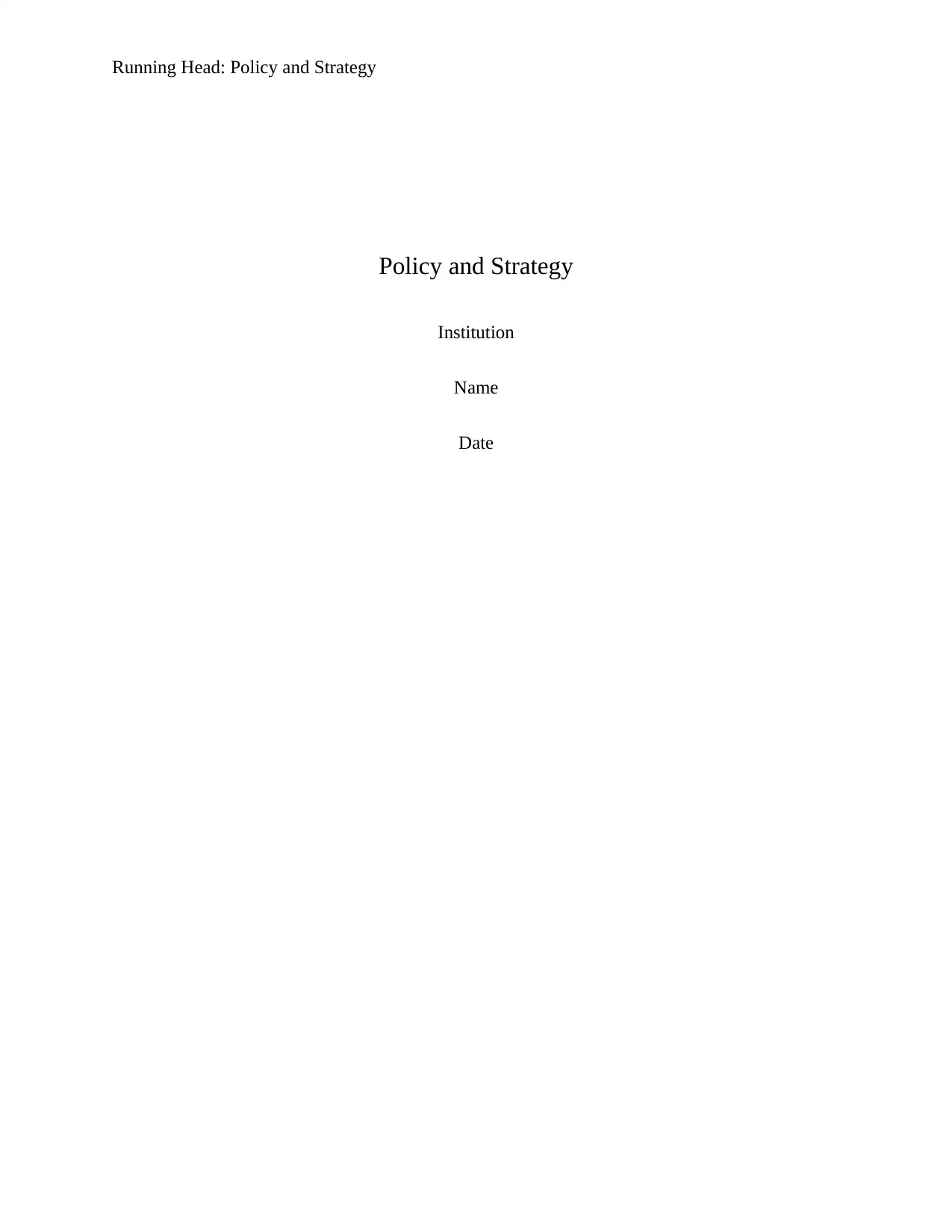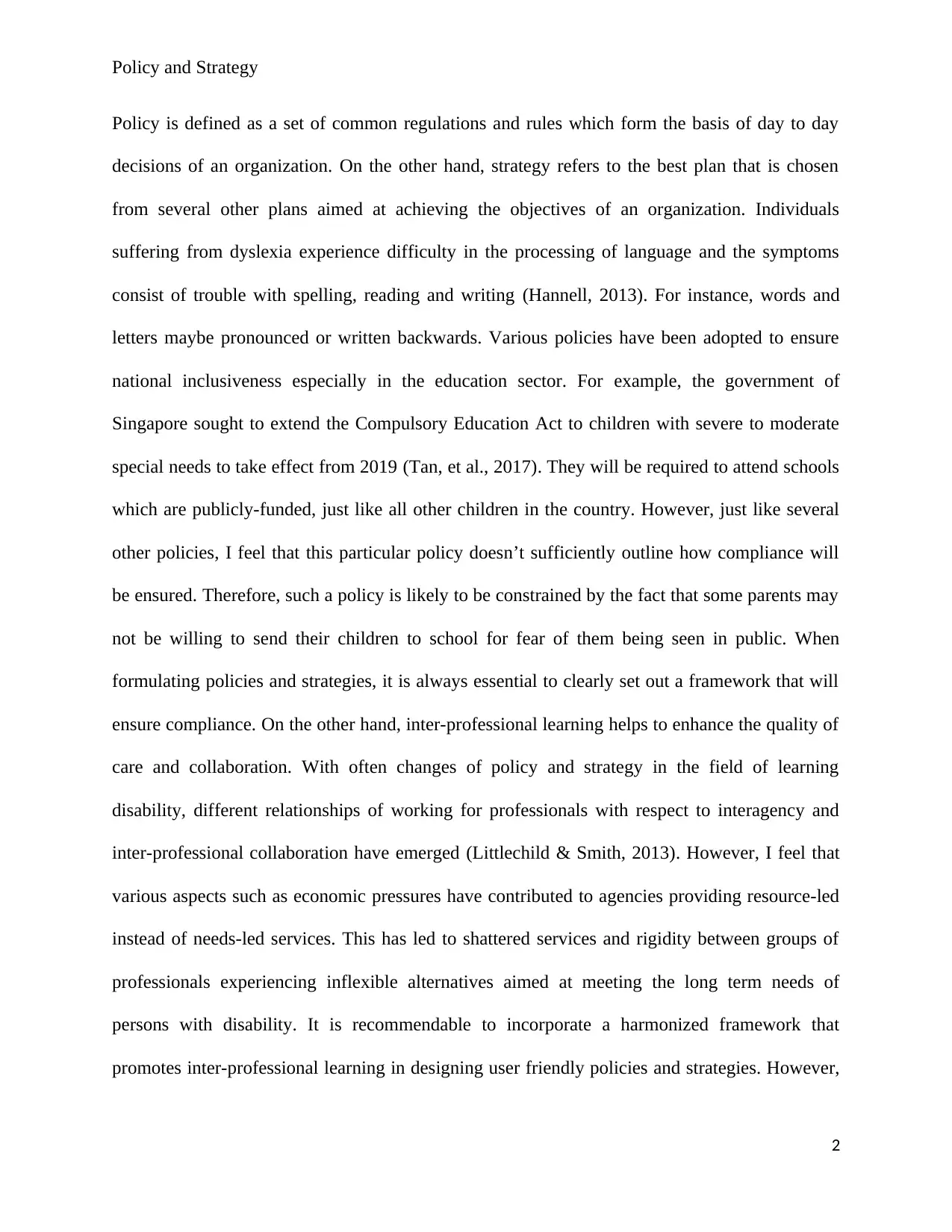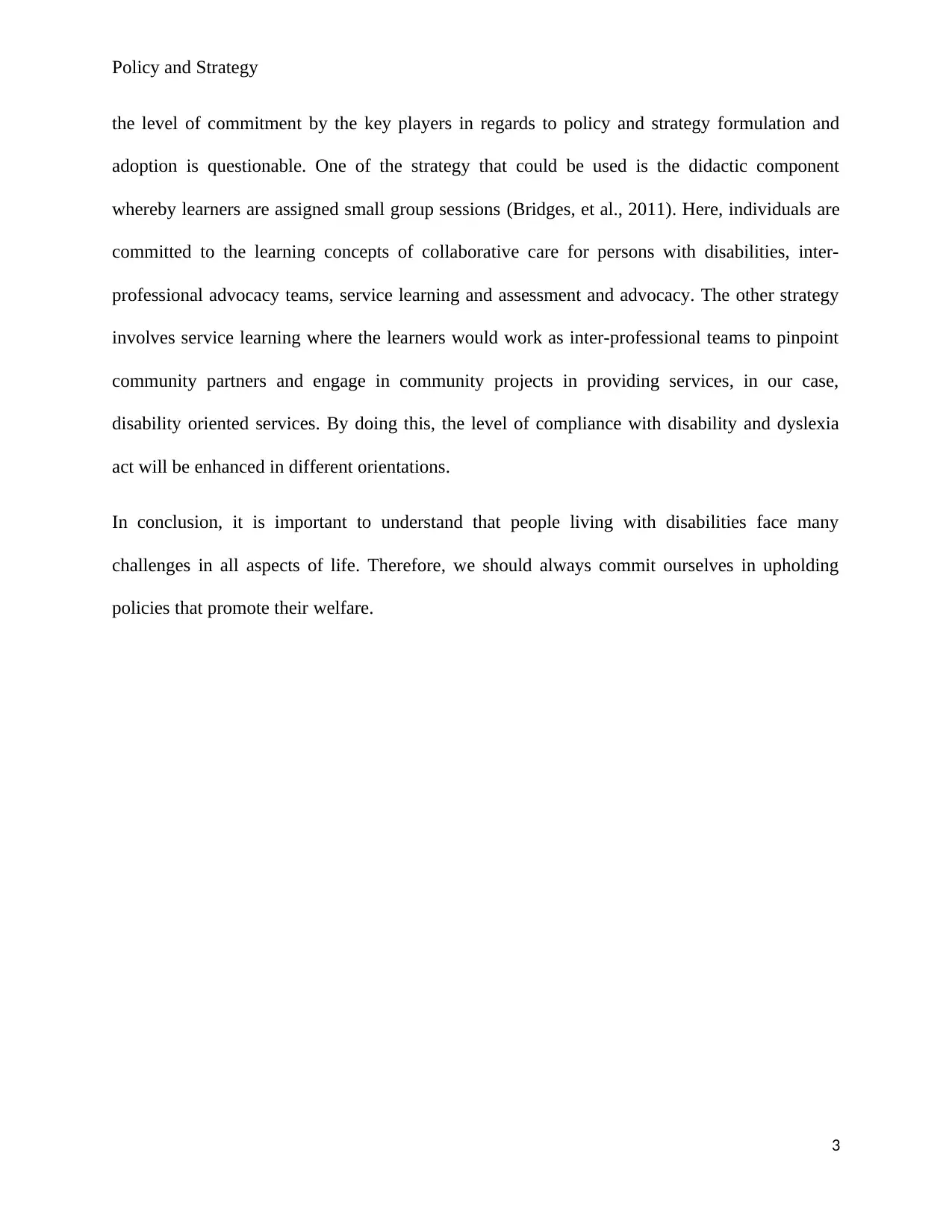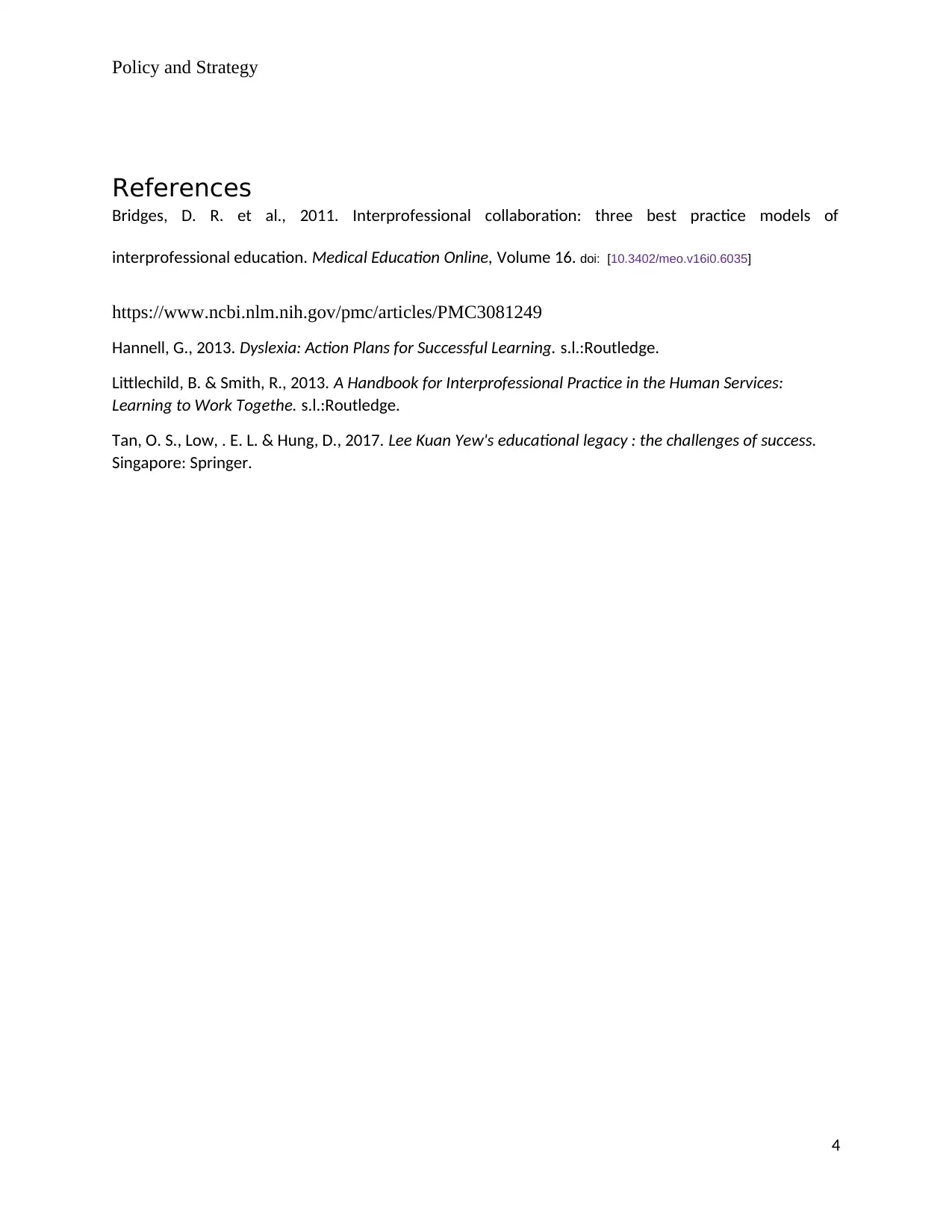Policy and Strategy: Addressing Dyslexia in Educational Settings
VerifiedAdded on 2023/06/03
|4
|677
|412
Essay
AI Summary
This essay examines the concepts of policy and strategy within the context of education, specifically addressing the challenges faced by individuals with dyslexia. It defines policy and strategy, highlighting the difficulties dyslexic individuals encounter in processing language. The essay analyzes Singapore's efforts to extend the Compulsory Education Act to children with special needs and discusses the importance of compliance frameworks in policy implementation. It emphasizes the role of inter-professional learning in enhancing the quality of care and collaboration, while also acknowledging the impact of economic pressures on service delivery. The essay recommends a harmonized framework to promote inter-professional learning and suggests strategies like didactic components and service learning to enhance compliance with disability acts. In conclusion, the essay underscores the importance of upholding policies that promote the welfare of individuals with disabilities.
1 out of 4











![[object Object]](/_next/static/media/star-bottom.7253800d.svg)